Restaurants have a lot to gain by taking reservations from guests. However, they also have a lot to lose if they’re not careful when implementing a booking system.
In this article, we’ll explain the pros and cons of taking reservations and show you how you can reap the greatest benefits while also incurring the lowest costs to your business.
Let’s start with the pros and then move on to the cons of taking reservations at your restaurant before delivering a final verdict.
What Are the Pros of Taking Table Reservations?
Taking reservations can help you regain control of meal service at your restaurant. It allows you to stabilize the flow of guests and collect more revenue every workday.
It also provides for a better guest experience because guests can be sure that they’ll be seated and served on time.
Let’s take a closer look at the benefits.
Higher Sales Potential
Not taking reservations can make your business hours a bit chaotic and unstructured.
The reason for this is that potential guests often want to have their meals at roughly the same time, creating busy and slow business hours.
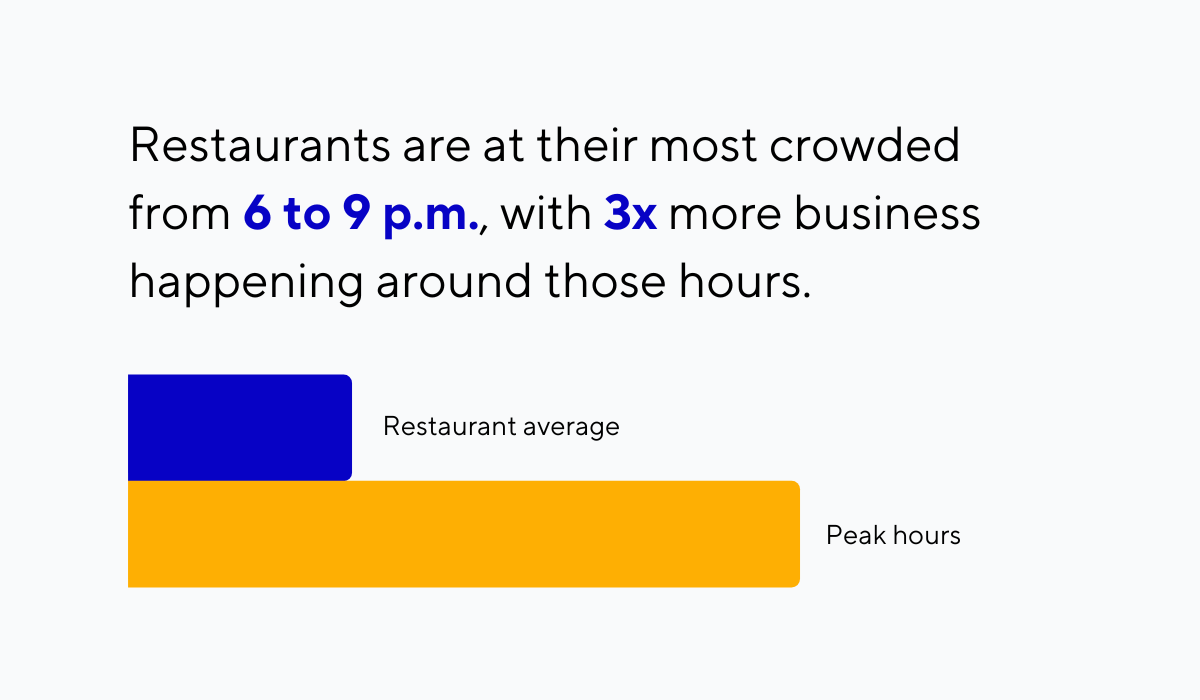
Illustration: Tablein / Data from: Mad Mobile
With no order to the evening (no reservations), you could be looking at a deserted dining hall at one point in the evening and turning away guests at the next.
In other words, you might be turning down sales because you can’t accommodate your customers.
But with a reservation system in place, this problem will largely be mitigated.
That’s because, when people call or check your available tables online before coming in, they get a chance to pick another time slot if the dining hall is booked out during peak hours.
This allows you to increase sales because those guests who would have been turned away can now be seated and served.
And the added certainty of having a table secured might also encourage more people to come to your restaurant, giving your sales another boost.
In this way, reservations are closely correlated with sales, which is one of the most convincing arguments for having a reservation system in place.
Better Staff Management
Picture this: it’s a slow early afternoon, and your servers and kitchen staff are going about their duties as usual.
Suddenly, a group of twelve people enters the restaurant and wishes to be seated.
You have the tables to accommodate them but, since it’s early afternoon, you’re working with a skeleton staff.
If you seat this group, you’ll get some good sales, but you won’t be able to provide your best customer service, meaning your guests won’t have the best experience and will probably tip poorly.
The management is at fault here because it could not adequately predict and prepare for the sudden uptick in traffic.
Could this outcome have been avoided? Yes, if the group had been able to book ahead of their arrival.
In that case, the management would have seen that their schedule includes a big group coming in at a usually slow hour, and done something about it.
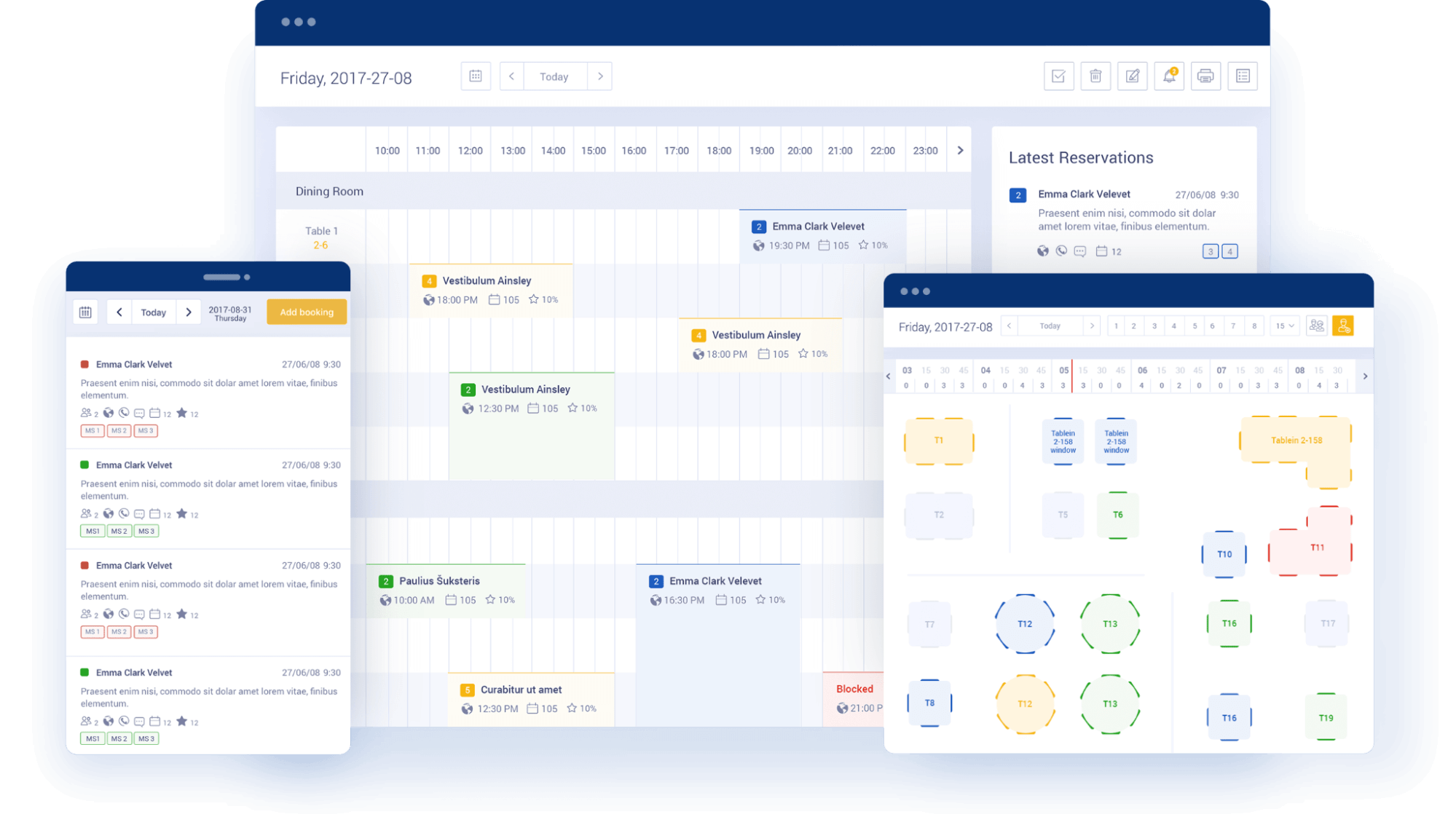
Source: Tablein
For example, they could have modified the staff schedule to provide the working staff some help in serving the group.
But giving you the ability to handle these unusual circumstances isn't the only way taking reservations can help you with staff management.
If you’re using an online reservation system, such as Tablein, you can also take advantage of its reporting capabilities and get an overview of the busiest times at your restaurant.
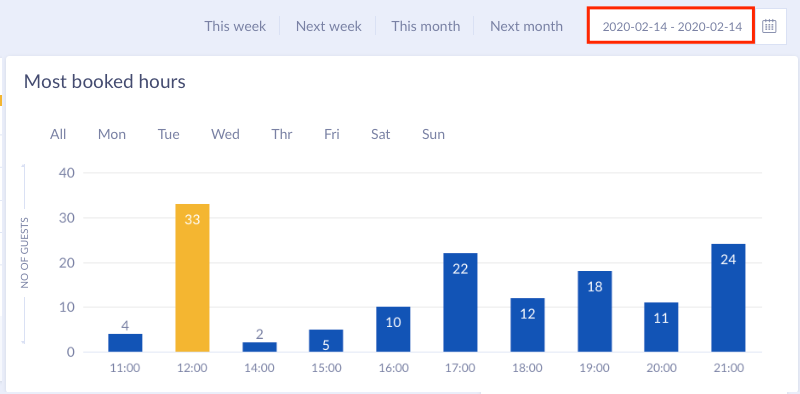
Source: Tablein
That way, you can plan ahead for every shift and never experience under- or overstaffing because you’ll be able to predict guest traffic at different times of the day.
Ensuring adequate staffing is a key responsibility of every restaurant owner and manager.
Taking reservations is your way of taking control of staffing management and securing the best possible customer service and working conditions.
More Control Over Wait Times
The great thing about reservations is that they provide you with precise information on when a customer will arrive.
Working with that piece of data and factoring in the specifics of your menu, ambiance, and restaurant concept, you can also predict when they’ll leave.
This helps you better serve all of your customers because you can significantly cut down on waiting times, one of the biggest obstacles to a guest’s pleasant experience at your restaurant.
People tend to mind having to wait for a table to open up, and if that wait stretches out, they won’t think twice about leaving and heading to a different restaurant.

Source: Reddit
At that point, you’re already losing revenue, but you’re also risking losing this customer for good, because their experience with you wasn’t what they expected.
However, with a reservation system in place, you can all but guarantee that a guest will be seated on time.
And as you know from experience how much time a visit to your restaurant takes, you can also predict when they’ll be finished so that you can seat the next guest, and so on throughout the evening.
Remember, wait times are one of the biggest dangers when you want to offer the perfect dining experience. Use a reservation system to take control and mitigate this risk as much as possible.
What Are the Cons of Taking Reservations?
After examining the pros of taking reservations, let’s see what the downsides are.
These mostly have to do with excluding a segment of your audience that doesn’t like to book ahead and risking empty tables because of people who book tables but never turn up.
Let’s start by mentioning the guests who avoid making reservations.
Losing Some Customers
Restaurants serve a diverse audience.
Some diners will always book ahead of time to ensure they have a table, while others prefer a bit of spontaneity and will avoid eateries that require this kind of planning in advance.

Source: Reddit
This means that requiring a reservation for your restaurant might cause you to exclude some potential customers who aren’t in the habit of booking tables for their visits to restaurants.
This can be a sensitive situation because guests who are not aware of your booking policy might arrive and feel disappointed or even frustrated when they get turned away at the door.
And it’s always a good idea to stay on your patrons’ good side.
That’s why it’s a smart practice to display a message that you don’t accept walk-ins prominently on your website.
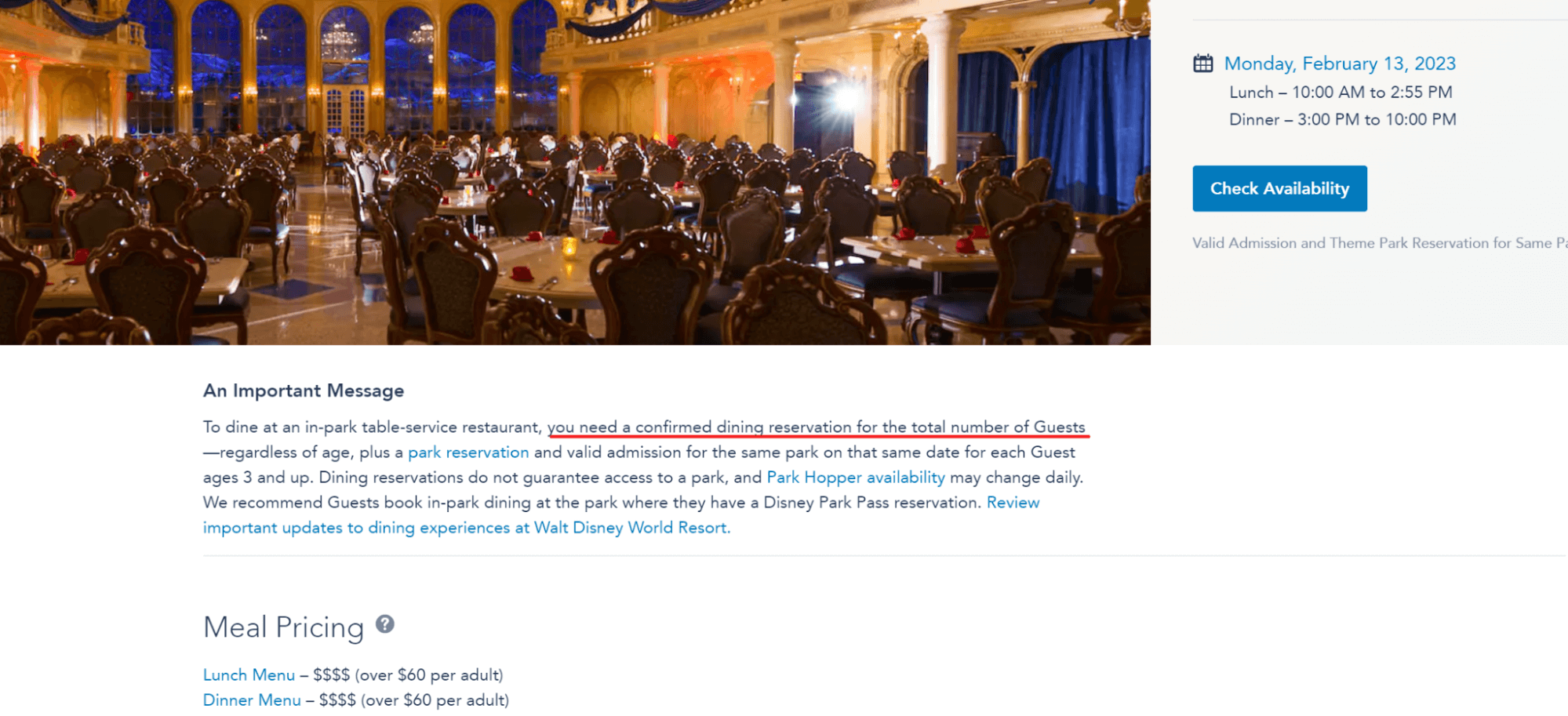
Source: Disney World
Alternatively, you can block off a part of your dining hall as a walk-in area where tables cannot be reserved and are intended for guests who show up unannounced.
For example, the Tablein reservation system will let you mark some tables as walk-ins and won’t allow the staff to choose them for a booking. In the seating chart below, these tables are marked violet, while the tables available for booking are marked green.
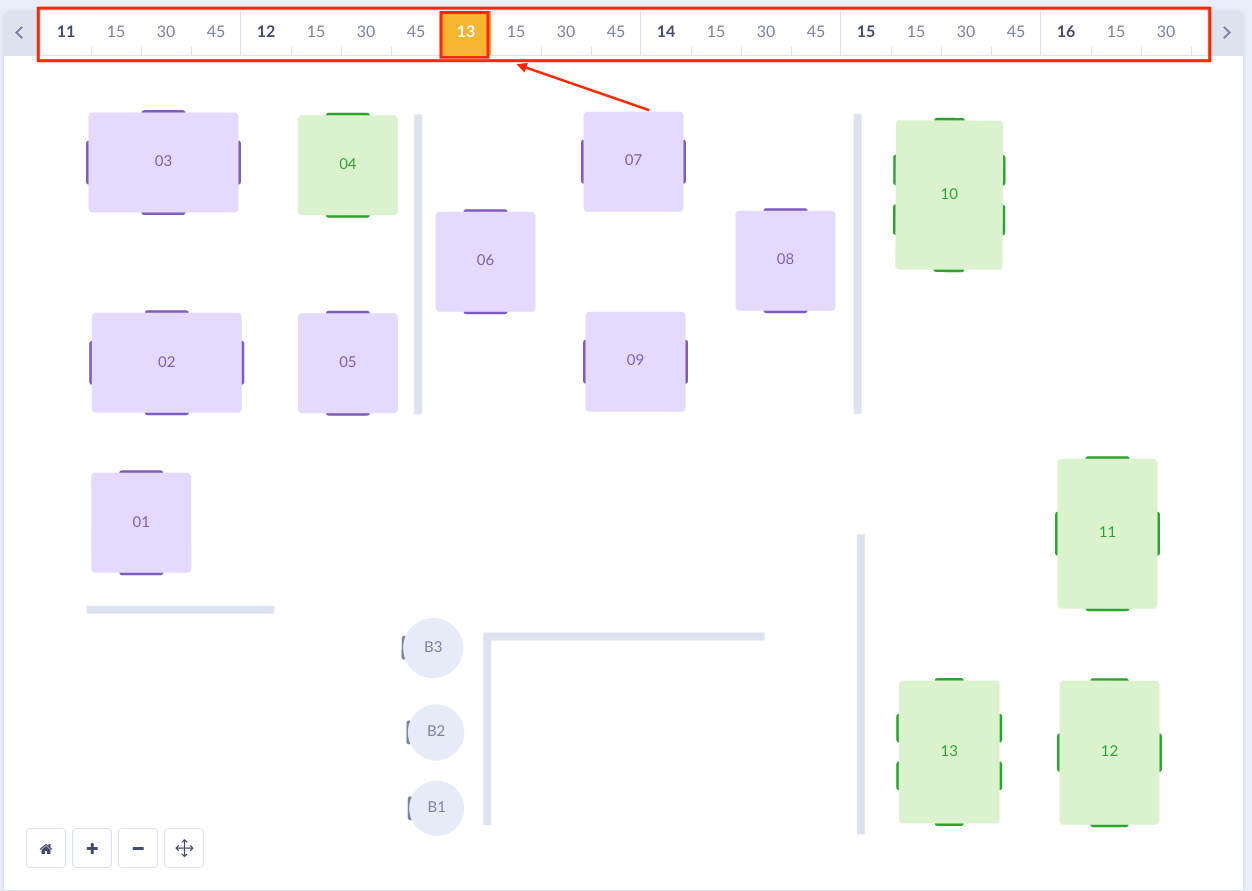
Source: Tablein
That way, you’ll be able to accommodate both types of guests and avoid excluding guests who dislike making reservations.
So, to recap, insisting on a no-walk-in policy will give you complete control of your dining hall, but some guests might be lost as they prefer not to reserve in advance.
A good fix for this is setting a couple of tables aside for walk-ins.
Chance of Overbooking
Reservation management is more complex than it might seem at first glance. Your dining hall is always the same, but the bookings change from hour to hour and in smaller intervals.
Unless you have a dedicated reservation manager, your busy staff members are in danger of double-booking tables or miscalculating how long it takes one guest to vacate the table so it can be prepared for the next diner.
Why is that a problem?
For the same reasons we discussed in the last section. Incoming guests will not be happy to turn up for their reservation only to find out you can’t seat them (yet).
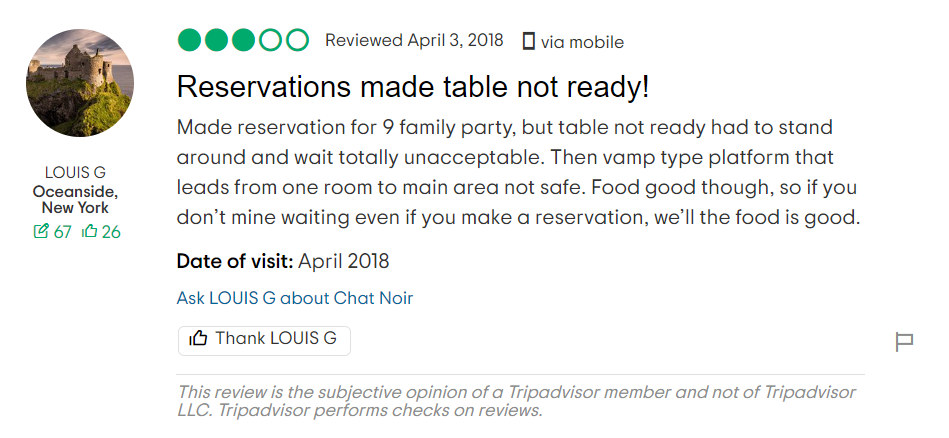
Source: Trip Advisor
If this becomes a persistent problem, your reputation could be in peril, and people won’t risk coming to your restaurant because they suspect their experience might be suboptimal.
As we said, hiring a dedicated reservation manager will eliminate this issue, but at a considerable cost since this is another paycheck to account for in your business.
A better option might be to automate reservations using an online table booking system, such as Tablein.
This kind of tool lets guests pick out a date, time, group size, and dining area right there on your website.
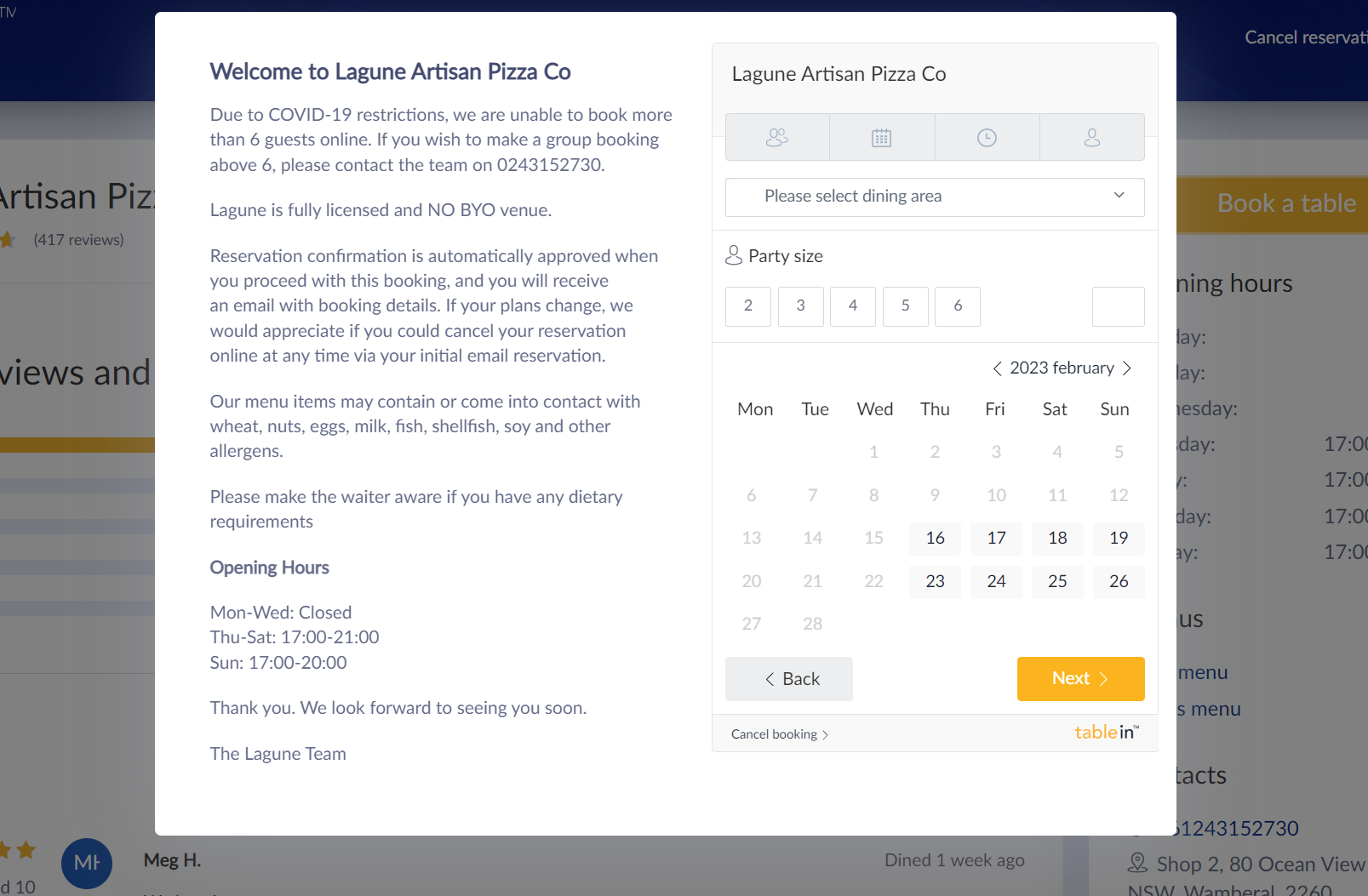
Source: Tablein
The reservations are automatically recorded and displayed on your end so you can get an overview of your reservation schedule.
That way, there’s no chance of overbooking, double bookings, or other issues caused by human error.
Quality software is taking over many administrative and repetitive tasks, and the restaurant industry is part of this revolution.
Stay current with the times and invest in a reservation tool to avoid overbooking and other reservation management problems.
Risk of No-Shows
This is probably the biggest disadvantage of offering reservations at your restaurant. Sometimes, guests will book a table and then fail to show up for whatever reason.
In the hopes that the guest might still show up, you won’t be able to offer the table to another guest.
If they do not, you’ll be unable to turn the table, and the revenue for that time slot will be lost.
This isn’t a rare occurrence, either. According to one study of the hospitality industry in the UK, as many as a fifth of all reservations turn out to be no-shows.
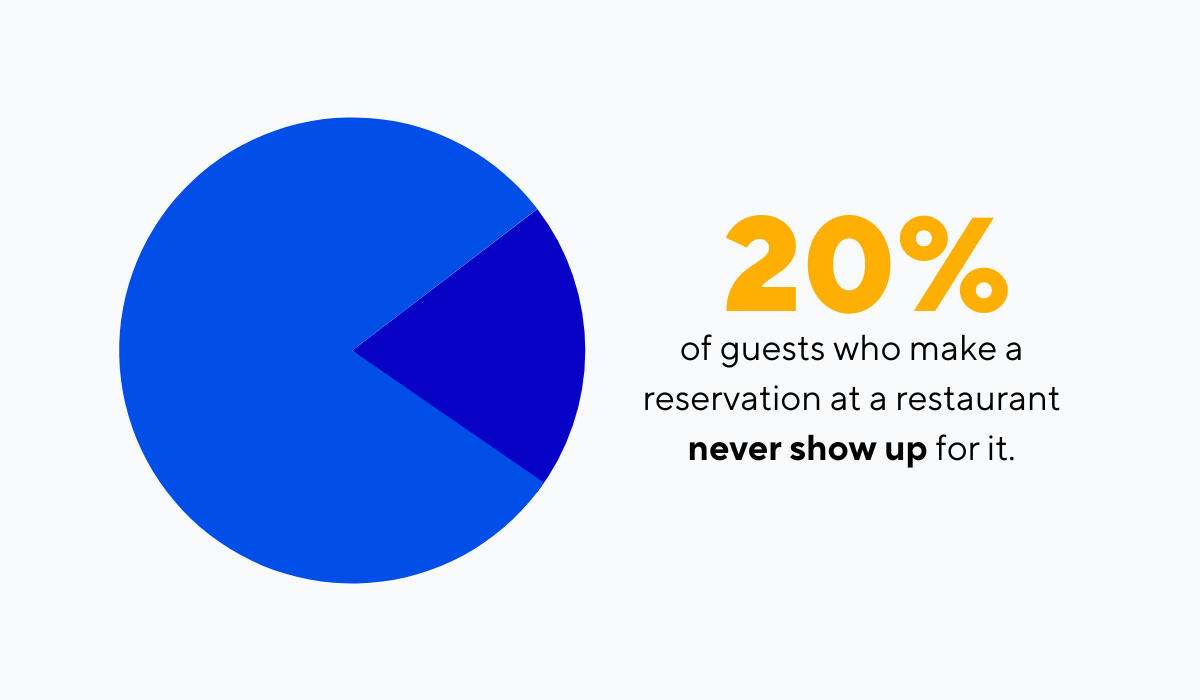
Illustration: Tablein / Data from: Carbon Free Dining
There are a couple of solutions you can try here.
One is making it a restaurant policy that reservations will be released if the guest doesn’t show up soon after the time they booked.
Nikolas Lefkimiatis, manager at the Trafalgar Tavern in London, emphasizes that this method will reduce your losses in case of no–shows:
A policy with a time frame on how long the table will be held-wait could make the no-show tables available to walk-in customers after 15 to 30 minutes, eliminating the loss to only this 15 to 30 mins wait.
Another idea is to require a deposit as a part of the table reservation process. This will allow you to collect some revenue even if the guest doesn’t show up.
However, this method could put some guests off creating a reservation in the first place, so use it sparingly.
For example, require a deposit only for large groups representing the biggest financial risk where no-shows are concerned.
And that concludes our discussion of the biggest disadvantages of taking reservations.
As you can see, these issues can bring some financial harm your way, but only if you don’t mitigate them.
Should You Take Reservations at Your Restaurant?
By now, it should be obvious that the pros greatly outweigh the cons and that taking reservations at your restaurant is definitely a smart business decision.
Taking reservations allows you to grow your business gradually because you can accurately predict and control the flow of guests every evening and organize your business in a way that lets you capture the most revenue while offering the best service.
Of course, there are a couple of disadvantages to bear in mind here, but each of them is manageable with a good reservation system in place.
For example, our own reservation system, Tablein, was built with reservation management issues in mind and has features that will help you combat them, such as:
- Fully automated reservation capture system (to help you avoid overbooking)
- Waitlist feature (for walk-ins who are willing to wait for a table)
- Deposit and prepayment acceptance (to put a stop to no-shows)
- Automated notifications (to confirm reservations and remind guests to show up)
Best of all, this kind of tool is user-friendly (for guests and restaurant staff alike), and guests seem to have no qualms about using it.
In fact, the guests themselves say that making reservations online is easier than any other method of booking a table.
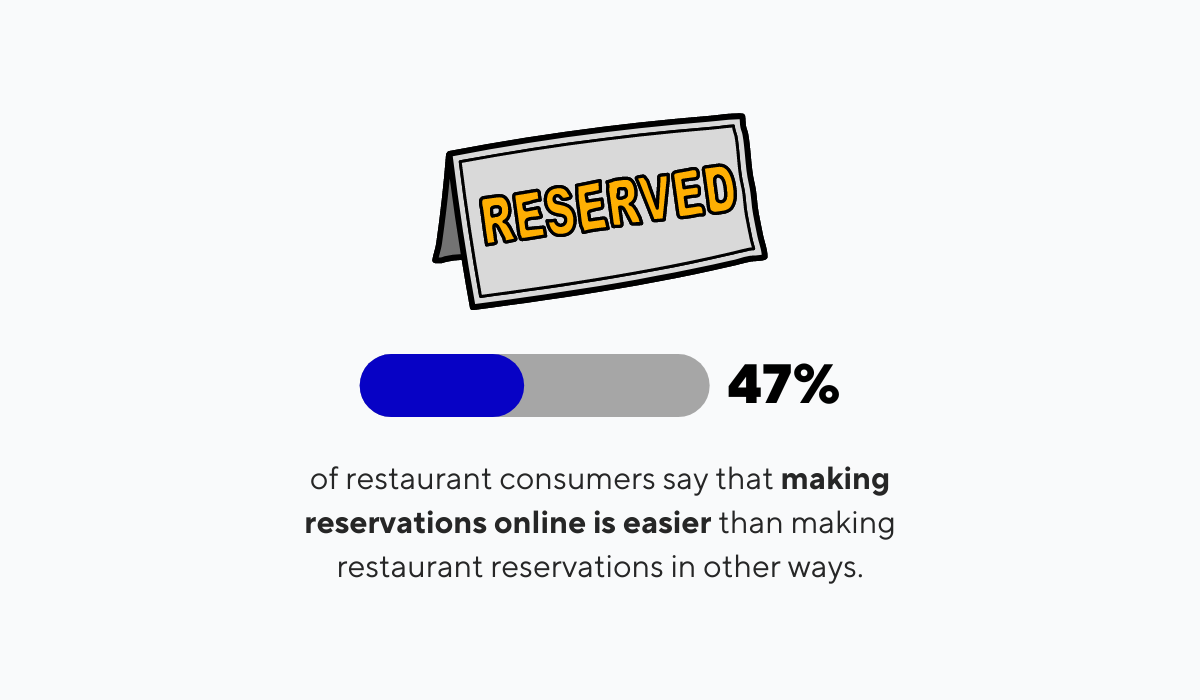
Illustration: Tablein / Data from: Aytm
All things considered, restaurant owners contemplating if they should take reservations should know that this feature can make their business more robust and feasible without incurring a high cost.
Conclusion
Like any other business system, reservations have their pros and cons.
The pros revolve around financial gains and management facilitation, while the cons are focused on issues that pop up because of human error and guest preferences.
The key takeaway from this article is that restaurant reservations have been around for a long time, and modern technology and clever owners have found ways to circumvent every disadvantage you can think of.
So, if you haven’t already, start experimenting with different reservation policies, practices, and tools and build a system that suits you best.
Get a 30-day Exclusive Trial
As a Tablein blog reader, you’re eligible for an exclusive 30-day free trial to experience our simple reservation solution for your restaurant.
Enter your business email, and we’ll send you all the steps needed to create your account.
Share this
You may also like
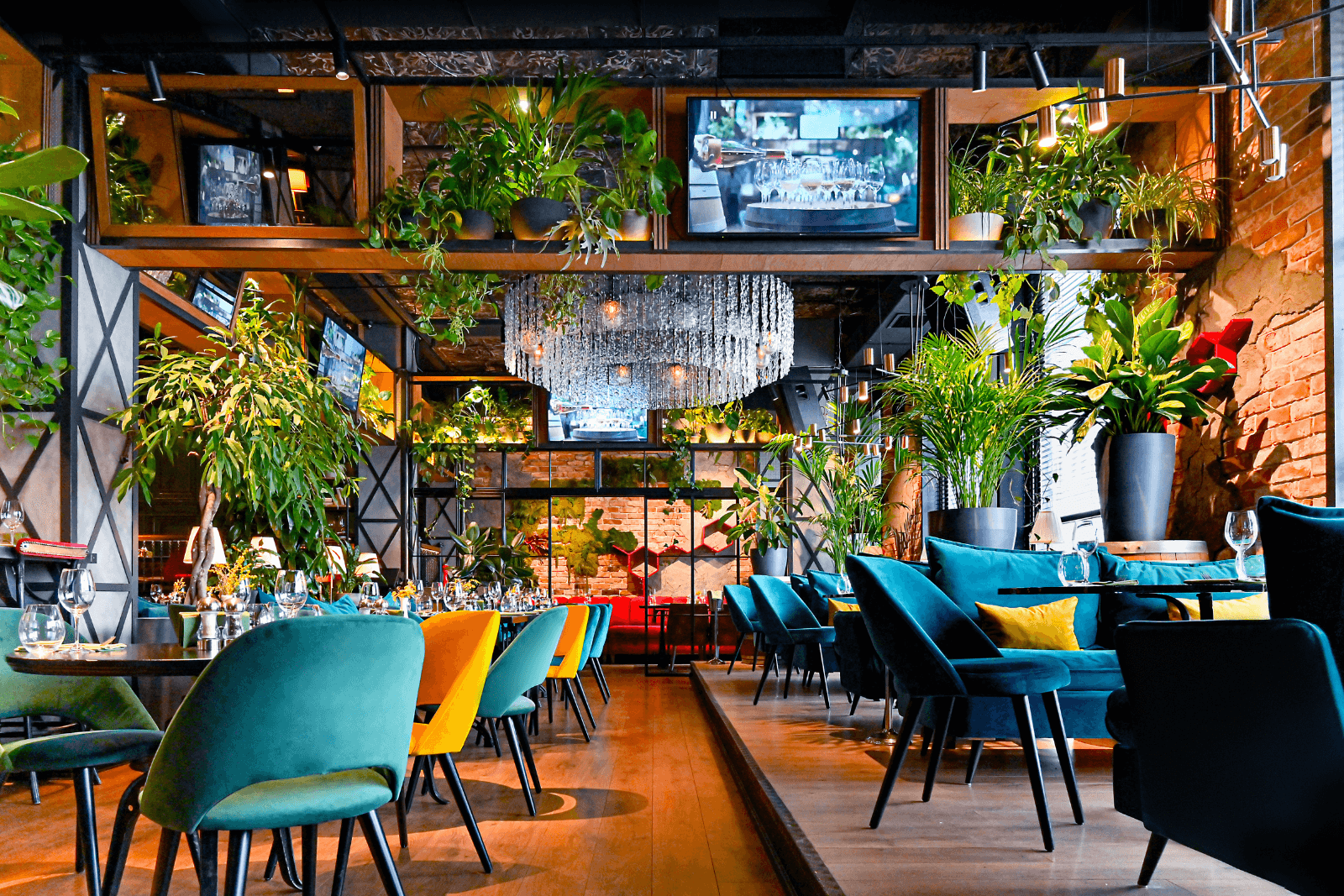
How to Improve Your Restaurant Reservation Management

How to Deal With No-Shows at Your Restaurant
